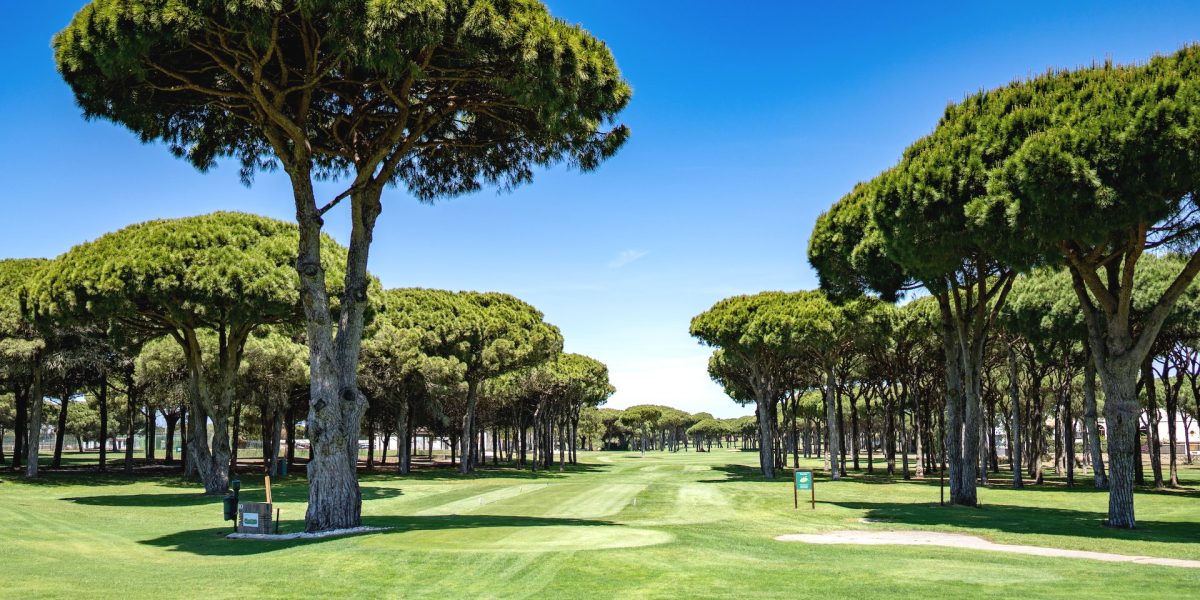Seve Ballesteros designed the 18 holes of this classic par 72. It was inaugurated in 1990 and expanded in 2000. For more than 30 years, its spectacular beach views and impeccable maintenance have made it a course of reference on a national and international level.
Hole-by-hole guide
Hole 1 PAR 4 HCP 2
The course starts with a wide and straight fairway. The biggest difficulty lies in the distance. There is plenty of space to put the drive, but beware of the bunkers on each side of the fairway. The green is protected on the front side by a dip and a bunker to the right. There is also another bunker on the back side to keep balls from rolling into the lake. The green is broad and slightly undulating.
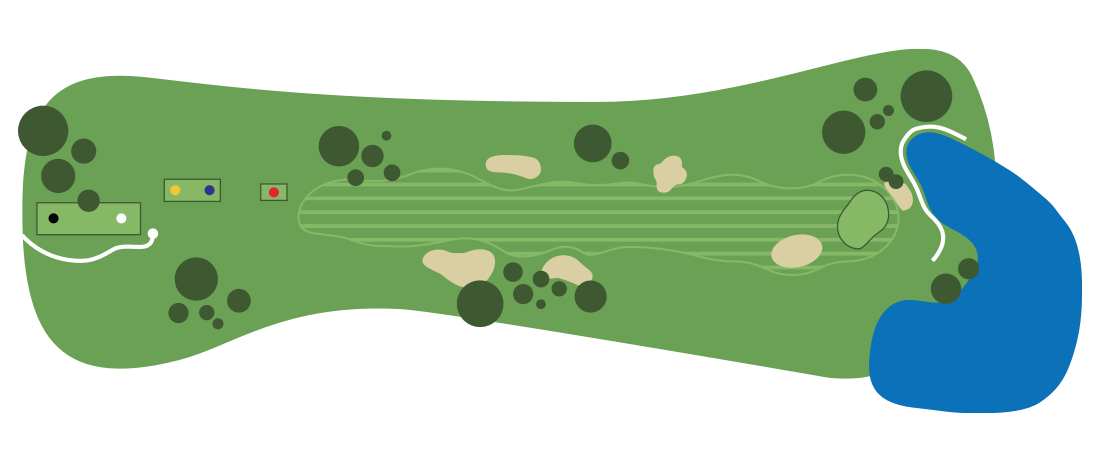
Hole 2 PAR 5 HCP 12
The gentlemen’s tee gives the opportunity to cut over the trees on the right side, located at 180 metres, or take the safe route to the left. The entrance to the green is protected by a small lake that is only visible once you’re 100 metres away. The wide green has two platforms leading the ball into the lake, which favours approach shots landing short of the flag.

Hole 3 PAR 4 HCP 6
This par 4 features a sharp dogleg right, with an out-of-bounds area to the right that can enter into play, especially if you try to cut over the fairway. A good drive is essential in order to reach the green in two. The green is narrow, long and surrounded by small dunes.

Hole 4 PAR 4 HCP 18
A make-up hole with a dogleg right. Players with long drives can cut over the fairway by aiming their tee shots over the palm trees, but risk finding the out-of-bounds area to the right. The only difficulty on the approach shot is the bunker protecting the front-left side of the green.
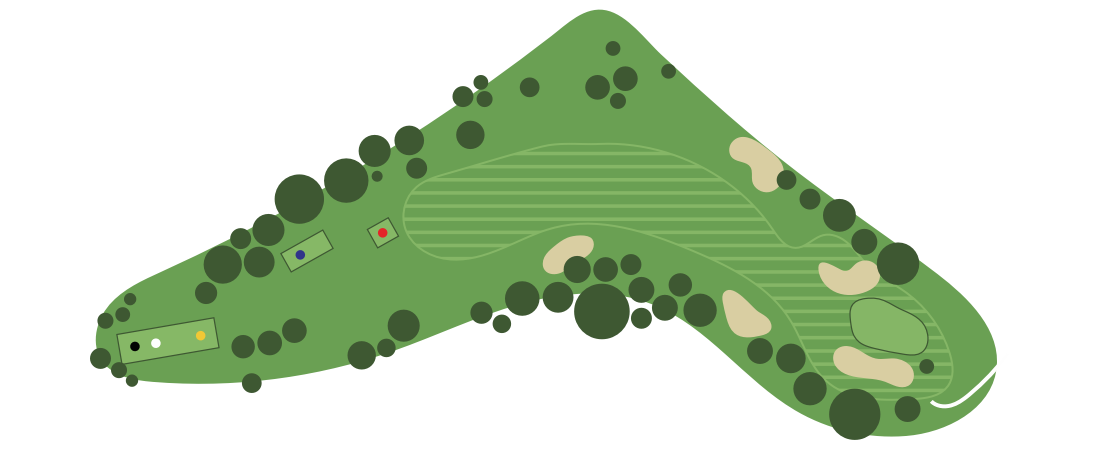
Hole 5 PAR 4 HCP 4
The large lake protecting the green throws a wrench into this one. The tee opens to a wide fairway, but too long of a tee shot puts players on a downhill lie. More risk-averse players can work around the lake to the left side. Almost the entire green slopes toward the lake, both to the front, the right and off the back.
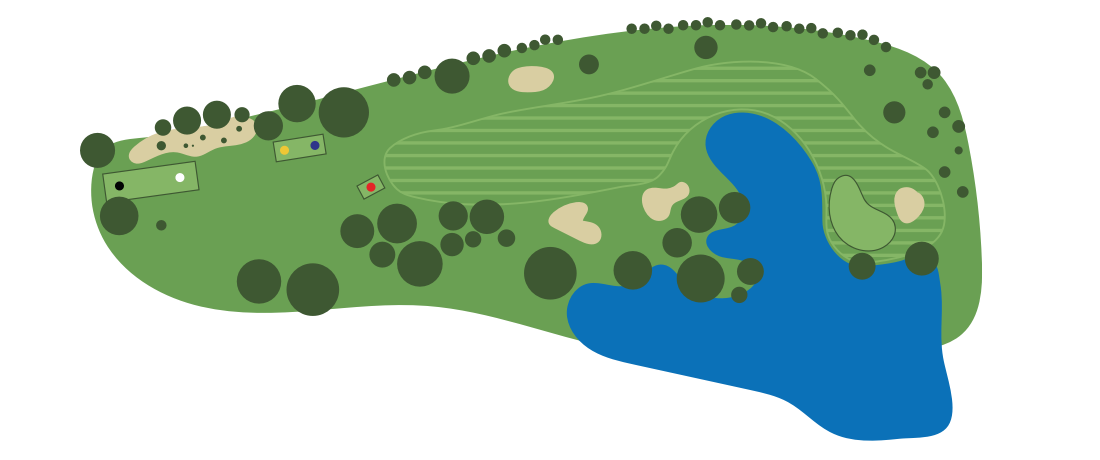
Hole 6 PAR 4 HCP 14
Spectacular sea views make this the course’s signature hole. The danger lies in the out-of-bounds areas left of the fairway and behind the green. It’s better to aim to the left when approaching the green, given the deep bunker on the right. There is also a deep dip leading up to the green. The green runs diagonally toward the right and slopes to the right as well.

Hole 7 PAR 3 HCP 10
Depending on the wind, this par 3 can either be very long or easily reachable. Players with a shorter range are better suited to aim towards the left to shorten the shot over the lake. The green is wide, with a slope towards the back and a bunker on each side.
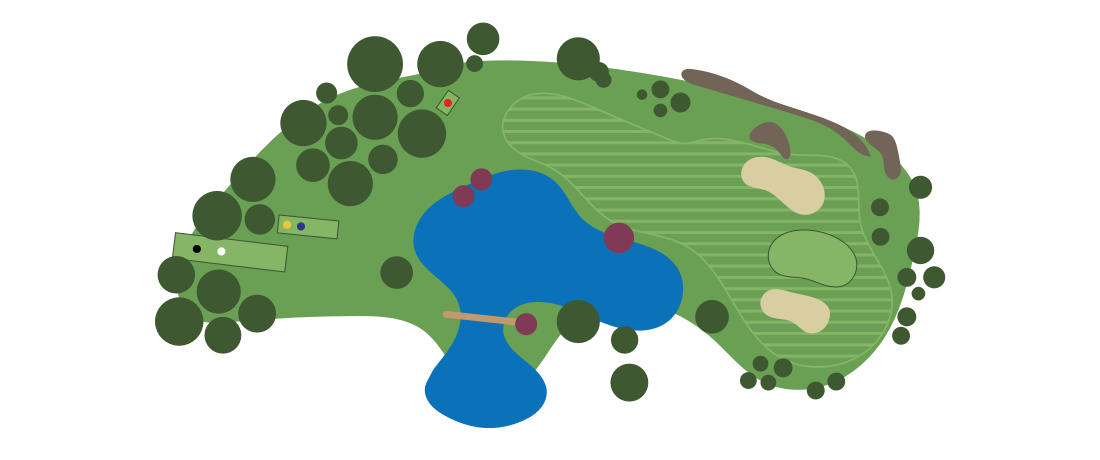
Hole 8 PAR 5 HCP 8
The entire fairway slopes from right to left. With a slight dogleg left, the most important thing is to keep out of the pine trees lining the fairway. Tee shots should aim for the centre-left of the fairway to best set up the second shot. The raised green is protected by bunkers, especially on the right.

Hole 9 PAR 3 HCP 16
Club selection is key on this long par 3, which can vary significantly depending on the direction of the wind. The run-up to the green is very narrow, as it is flanked by bunkers. The green’s main characteristics are its large width and the two platformed levels that are undetectable from the tee.

Hole 10 PAR 4 HCP 3
This is a very difficult hole best suited for those who hit the long ball. To hit the green in two, the second shot needs to be high and long above the pines to one of the smallest greens on the course. Players with a shorter range should avoid the bunkers on the right side of the green. The green is slightly elevated and protected by the bunker to the right.

Hole 11 PAR 5 HCP 11
This is the shortest par 5 on the course, with a sharp dogleg left. The entire left-hand side is out of bounds. This hole is very reachable if you sacrifice distance to keep the ball in the fairway. The green is protected by bunkers on both sides and a deep dip behind it.

Hole 12 PAR 4 HCP 13
Short hole with a sharp dogleg right. Players who hit the long ball can cut over the fairway with limited risk, with only the pines around the green to complicate the shot. The green is slightly raised, with a bunker hidden behind it.
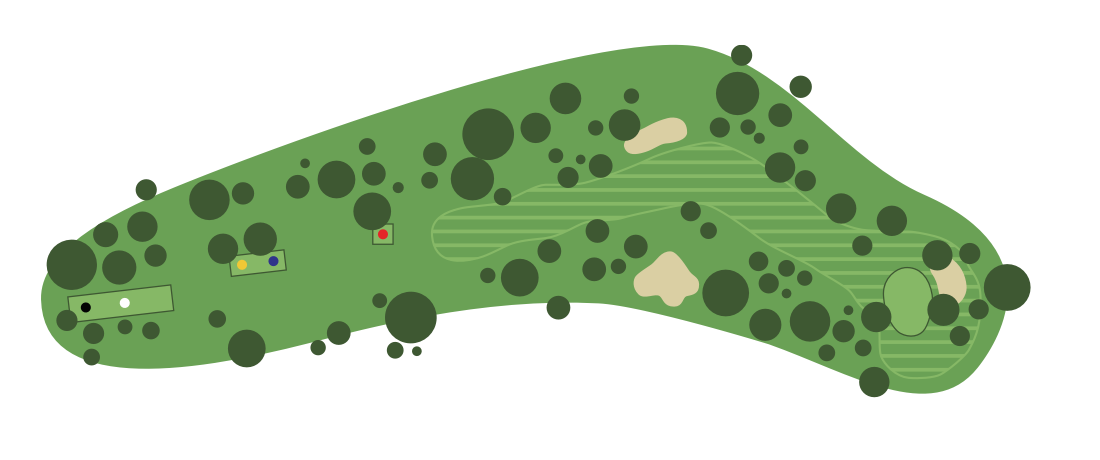
Hole 13 PAR 5 HCP 9
The longest hole on the course, with a slight dogleg left. At first sight, its length seems like the only complication. Strategically placed pine trees along the wide fairway and the multiple bunkers, however, can make the hole more complicated. On the approach shot, keep in mind that you can’t see the back of the green, which slopes down off the back. Wide green surrounded by small dunes.

Hole 14 PAR 4 HCP 17
Dogleg right. An accurate tee shot is essential if you want a shot at reaching the green in two without trees standing in your way. The rough on the right side is filled with pine trees, and so is the middle part on the left, right where the ball tends to land. This green is very long, so club selection can vary significantly depending on where the flag is placed.
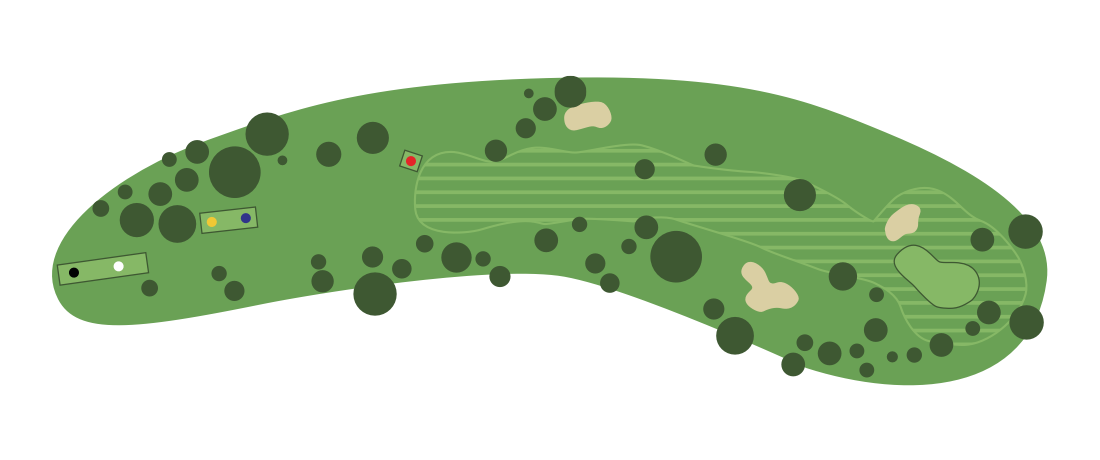
Hole 15 PAR 3 HCP 15
A short par 3 with a green protected fiercely by a short bunker to the left and another on the right. Keep in mind that there is also a bunker on the back left that you cannot see from the green. This long green features multiple drop-offs that are hard to notice.

Hole 16 PAR 4 HCP 5
The beginning of the end of this complicated course. This par 4 is wide and long, but areas on both the left and right are out of bounds. The bunker placed to the right can complicate the tee shots. Then, the pines to the right throw a wrench in the long approach to this raised green. There is a bunker in front protecting the green and another undetectable one to the right. The green is wide with a very slight slope.

Hole 17 PAR 4 HCP 1
A very long hole with a dogleg right. Aim your drive to the left of the fairway. Even so, the gigantic pine tree in the middle of the fairway makes the second shot difficult. The green features a slight dip.

Hole 18 PAR 3 HCP 7
A long and narrow par 3 whose green can only be reached on the fly, given one bunker in front of the green and another to the right. The green is slightly raised, so the flag placement cannot be seen from the tee. The green is very big, so you’re better off “going big” than landing short on this complicated final hole.

Downloads
We only have control over what we do with dedication.
SEVERIANO BALLESTEROS
When would you like to play?
Book conveniently online if you are a member or, if you are a visitor, contact us via email or telephone.



